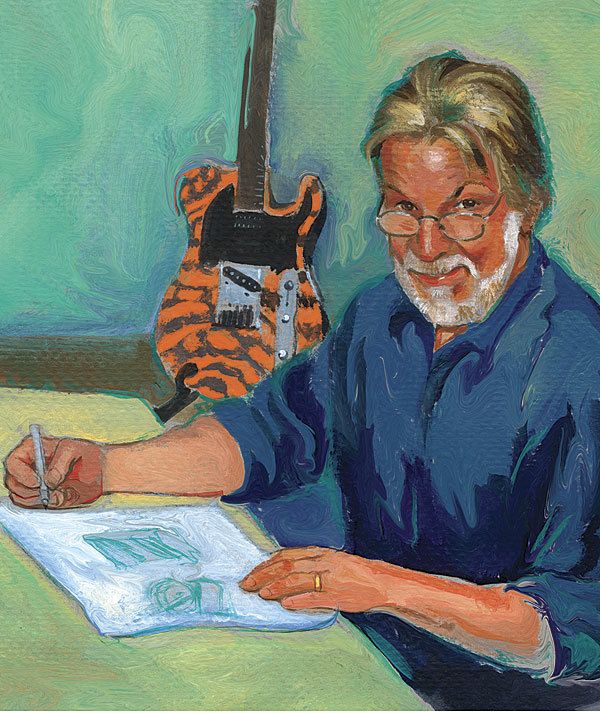Tailgate: Chuck Miller, Editor
After 30 years at Fine Homebuilding, Chuck Miller calls it a day. Here’s our exit interview.

How did you come to FHB?
I was an early subscriber to Fine Woodworking, and I thought it was the best magazine about craft that I had ever seen. It had drawings that were not only informative, but also beautiful. Everything about the magazine demonstrated a keen eye for detail and a powerful coherence. Clearly, the people who made this magazine cared deeply about it and its readers.
I was a builder at the time, remodeling houses in Berkeley, Calif. I was taking night-school classes in architecture at the university and thinking about getting a degree in that field when Paul Roman put an ad in Fine Woodworking announcing his new magazine: Fine Homebuilding. The ad said they were looking for editors who had experience in home building, architecture, photography, illustration, and journalism. I had my own darkroom, and I had illustrated several books. It looked like an ad that I had written for myself. I had to apply, and Paul hired me.
Did you imagine you’d be here for 30 years?
All of our editors are generalists. As such, we are called upon to (or get to, depending on your point of view) do lots of different things, so it never gets boring. That’s how 30 years slipped by.
Most memorable photo shoot?
Two come to mind: First, photographing Charles Greene’s James House in Carmel, Calif., from a helicopter; and second, photographing a town house in Sun Valley, Idaho, when I dropped to the living-room floor, nailed by a kidney stone.
What has been the most gratifying thing about being an editor at FHB?
Two things. From the get-go, I wanted us to make a magazine that honors the talents and the skills of both builders and architects, and the value of each. It’s no secret that builders and architects sometimes get into adversarial situations. We try to defuse that by emphasizing the importance of what each group brings to the party, and how to improve communication.
Also, I’ve worked with smart, highly motivated, and caring people. This applies to our staff; the builders, designers, and architects who contribute to the magazine; and most of our readers.
How many building tips have you edited and illustrated?
Somewhere north of 2000.
Favorite building-related books and movies?
A Pattern Language by Christopher Alexander, et al.
House by Tracy Kidder.
The Most Beautiful House in the World by Witold Rybczynski.
The Architecture of Happiness by Alain de Botton.
Movie? Pretty hard to top The Money Pit.
What’s next for you?
My wife, Jeanetta, and I are going to move back to the Northern California coast, where I plan to build a shop/studio in which I can build furniture, make paintings, and play guitar. I also want to get back into surfing, learn to fish from a kayak, and contemplate the Milky Way on clear, moonless nights. And still do the “Tips & Techniques” column.
What’s the future of home building?
I think it’s going to be all about energy efficiency and water. Energy prices will get to the point where people who don’t care now about wasting energy will start to pay attention. Somebody will figure out how to finance photovoltaic systems so that homeowners can take advantage of clean electricity at competitive prices without a huge up-front cash outlay. It’s a good time to be in the water-tank business. Houses will continue to get smaller, but be better designed, and modular construction will become more common. I’m hopeful that the phrase “common sense” won’t be a politically polarizing comment.
What’s the weirdest thing you’ve built in your house?
In the late ‘70s, I attended a lecture by Frank Gehry. I got so energized by his slide show and talk that I went home and put a trapezoidal window in our Berkeley cottage. My wife thought I was crazy. I was. I took it out a few years later.
Illustration: Jackie Rogers

























